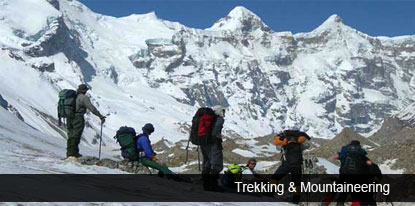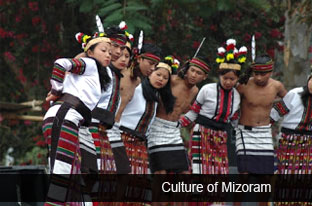
 Mostly visited for – Aizawl (The capital of Mizoram), Lawngtlai, Lunglei, Chambal, Kolasib, Phawngpui, Sibuta Lung, Thangliana Lung, Suangpuilawn Inscriptions, Tualchang
Mostly visited for – Aizawl (The capital of Mizoram), Lawngtlai, Lunglei, Chambal, Kolasib, Phawngpui, Sibuta Lung, Thangliana Lung, Suangpuilawn Inscriptions, Tualchang
Adventure – Trekking & Mountaineering: Champai, Phawngpui, Lunglei Town, Phawngpui National Park, Aizwal, Reiek tlang, Aizwal, Hmuifang Hang
Major Cities – Aizawl, Champhai, Thenzawl, Lunglei
Weather - Summer: March to May, Monsoon: June to August, Autumn: September to October, Winter: November to February. Climate of Mizoram depends upon the altitude of hill ranges and varies from tropical to sub-alpine.
Connectivity
By Air- The state has its airport in the capital city of Aizawl. Several airlines operate regular flights to and from Aizawl. Important cities in the rest of India like Kolkata, Imphal are linked to Aizawl by air.
By Rail- The state does not have any railway station in its boundary. The most convenient Railway Station is Silchar, which is a 6/8 hours drive from Aizawl. Silchar is serviced by important trains and is linked to the rest of India with convenient railway network.
By Road- The road network in the state is quite convenient. National Highway 54 connects the capital city Aizawl with the rest of the country through Silchar. Aizawl is also accessible from other important north-eastern cities in India like Shillong (450 km) and Guwahati (506 km)
History, Geography and Culture of MizoramGeographically, the state shares international borders with Myanmar and Bangladesh. Domestically the state is lined with Assam, Tripura and Manipur. The land of Blue Mountains, Mizoram has a flourishing tranquil aura based on its hilly expanses, crisscrossing rivers, silvery streams and thick bamboo jungles. Highest among hills here is the Phawngpui — the Blue Mountain. The biggest river in this state is Chhimtuipui. The economy here is agrarian based on rice cultivations at Vanlaiphai and Champhai Plains.
 Culture of Mizoram is sociable, hospitable and fun loving. The Mizo ethos is based on equality and living life at its best. Living in the lap of nature, the Mizos know how to lead life in its unabated vigour. Every major village now has a Mizo Association in an attempt to infuse society with its traditional lifestyle and customs.
Culture of Mizoram is sociable, hospitable and fun loving. The Mizo ethos is based on equality and living life at its best. Living in the lap of nature, the Mizos know how to lead life in its unabated vigour. Every major village now has a Mizo Association in an attempt to infuse society with its traditional lifestyle and customs.
Tlawmngaihna is the set of rules prevalent in the society where every Mizo is expected to be unselfish, hospitable and helpful to each other. This helpful nature is evident in every way of Mizo life, even in catering tourists as well.
The colourful welcoming nature of Mizoram is also evident with the ethereal presence of folk and community dances. This is a part of living heritage that is handed over from one generation to another. The joyous movements of dances and spirited songs are a deep reflection of Mizo passion for their cultural heritage. With its kaleidoscopic panorama of festivals and dances and natural treasures, Mizoram is a ‘pleasure heaven’ for the discerning traveller.
Wildlife Sanctuaries
Murlen National Park, Tualchang Wildlife Sanctuary, Vanhimailian Wildlife Park, Ngengpui Wildlife Park, Khawanglung Wildlife Park, Thorangtlang Wildlife Park
Religion – Christianity, Hinduism, Islam, Sikhism, Jainism, Buddhist
Festivals
Chapchar Kut (Mar), Anthurium Festival (June), Thalfavang Kut (Nov), Christmas (Dec)
Eat – Lentils, Bamboo shoots, Fish, Pork, Chicken, Wild Game Meat, Rice, Local Wine, (Zu) Tea
Buy – Cane and Bamboo Craft (Hats made of cane, bamboo cones, japis and circular boxes, traditional headgear), Basketry (Tlamen, Paiem and Dawrawn), Weaving (Pluans, Puan Dum, Puan Chei, Puon Zeh, Zawl Puon, Puon Laisen, Thangchhuah puan, Ngotekherh
Hotels – Tlawmngaihna is the code of ethics that guide the Mizos - it means everyone should be unselfish, hospitable and helpful to each other. The joyous movements of their dances and the spirited songs are a deep reflection of their passion for this cultural heritage. It is evident in the rich variety of their colourful costumes. Its crafts such as those in bamboo and cane are ingeniously varied to meet modern needs - but remain rooted to its tradition.
